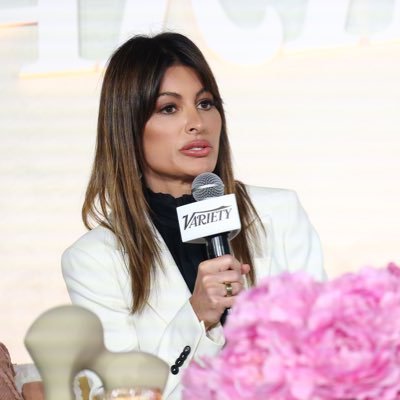Written by Victoria Bousis
The Motion Picture Academy must update its regulations to require all films submitted for Oscar consideration to declare any use of AI, says leading artificial intelligence technologist expert and award-winning filmmaker Victoria Bousis.
Disclosing AI is currently optional in Oscar submissions. But Bousis, owner of UME Studios in California, is calling on the Academy’s SciTech Council to make transparency mandatory.

As AI technology continues to evolve, it is increasingly used not just to enhance visual effects, de-age characters, and create photorealistic environments, but also to subtly alter performances. She explains: “These advancements blur the lines increasingly between human artistry and algorithmic intervention, so transparency is paramount for the industry at large to prevent a misinformed and misguided dilution of the craft itself.” In the following op-ed article, Victoria Bousis makes the case for AI transparency in film.
AI as a Tool vs. AI as a Substitute
AI has long been used in filmmaking, from neural rendering and generative AI in scene reconstruction to machine learning-driven VFX that de-age actors or create hyper-realistic digital environments. Recent films have demonstrated how AI can serve as, for example, an extension of CGI, enhancing backgrounds, color grading, and even restructuring frames for improved composition. For instance, Dune: Part Two employed AI-driven color correction to achieve the iconic blue eyes of the Fremen, while A Complete Unknown leveraged AI for scene reconstruction in motorcycle sequences. Emilia Perez explicitly identified AI tools in its credits, demonstrating a positive move toward transparency in filmmaking. As reported by The Guardian, the film’s credits acknowledge the use of an AI voice synthesis tool, to enhance the singing performances.
These uses of AI augment the world of a film but do not interfere with an actor’s performance. However, when AI is applied to modify an actor’s voice, physicality, or emotional delivery, it raises critical ethical questions. Oscar nominations for Best Actor and Best Actress—or even Best Director—are grounded in the skill, dedication, and transformative ability of performers and filmmakers to bring characters and stories to life. This is the essence of the craft: earned skills, not software-generated enhancements that defines the greats from others.” This often includes intense preparation, such as dialect training (as seen in notable performances like Meryl Streep in The Iron Lady), extensive musical training (Timothée Chalamet for his portrayal of Bob Dylan in The Complete Unknown ), or extreme physical transformations (Christian Bale in The Machinist).
AI and the Integrity of Acting
One of the most pressing and recent controversies fueling this debate as the proliferation of AI in the industry is Oscar winner Adrien Brody’s Hungarian accent in The Brutalist, which was enhanced using AI technology. As stated in Vanity Fair, Brody and Oscar nominee Felicity Jones, both playing Hungarian immigrants in the film, had their Hungarian dialogue refined through Respeecher, an AI-powered voice synthesis tool designed to adjust tone, pronunciation, and speech inflection while maintaining the actor’s natural voice. Respeecher, widely used in both film and gaming industries, utilizes deep learning models to modify speech patterns seamlessly, making it virtually undetectable to the human ear.
The film’s editor, Dávid Jancsó, justified the decision, stating: “They did a fabulous job, but we wanted to perfect it so that not even locals would spot any difference.” However, this raises a significant concern: If AI subtly alters an actor’s performance, how do we differentiate between an actor’s personal commitment to the role and the intervention of an algorithm?
The Brutalist director, Brady Corbet, issued a statement to various Hollywood trades, saying “Adrien and Felicity’s performances are completely their own. They worked for months with dialect coach Tanera Marshall to perfect their accents.” Innovative Respeecher technology was used in Hungarian language dialogue editing only, specifically to refine certain vowels and letters for accuracy. No English language was changed. “This was a manual process, done by our sound team and Respeecher in post-production. The aim was to preserve the authenticity of Adrien and Felicity’s performances in another language, not to replace or alter them and done with the utmost respect for the craft.”
However, while this may seem like a minor change when compared to the complexity of the undoubtedly powerful and committed performances of these actors , it opens the door to greater manipulation and the long-term dilution of the craft. With an eye on the future, I believe once you allow these things to happen you are opening up the case for AI to dilute, and even more dangerously, replace the art of acting with the singular use synthetic content across film and television. Despite having a background in tech and being familiar with Respeecher, I chose not use such tools to enhance the actors’ performances when directing my own award-winning virtual reality film, a powerful and true refugee story about family separation, Stay Alive My Son.

In my film, I had my lead actor Arnold Chun, who is of Korean descent, playing a Cambodian character and he spent endless time working with a dialect coach and listening to the voice of the real person he was embodying so it would have a ring of truth to it, same with my lead actor Kostas Filippoglou, who was of Greek descent. That’s nurturing your craft and expansion as an actor. I wasn’t interested in manipulating their words. The more actors agree to allow AI to alter their performance, even brilliant performances such as Adrien Brody and Felicity Jones, the more they risk making themselves less valuable and protected in the future. It gives the false impression that this craft can be done by anyone, even an algorithm.”

The issue at hand is not the use of technology in the industry – that’s evolution – but transparency from the onset, rather than disclosure after the fact. Audiences should know ahead of time what they are paying for, same with voters who are responsible to award the nominee whose performance is commensurate to the esteemed honor.
There are awards that commend excellence in technological advancement, such as the Emmy Awards, which recognized Respeecher for its outstanding innovation in the documentary film In Event of Moon Disaster, where it successfully cloned the voice of President Richard Nixon. Additionally, the Academy acknowledges technical and scientific achievements in filmmaking through The Academy Scientific and Technical Awards, which honor innovations that contribute to the advancement of the industry without compromising artistic integrity. These distinctions illustrate that there is a place to celebrate technological breakthroughs, but these achievements should not be confused with the craft of acting, which must be preserved as a distinct and human-driven discipline.
The Role of AI in Directing
Beyond performances, AI is also making its way into directing and filmmaking. Companies like Runway, Sora (by OpenAI), and Lumai are developing AI-powered tools capable of generating short films based on text prompts. As reported by Business Insider, these platforms allow creators to generate video sequences, experiment with visual effects, animation, and even simulate dynamic cinematography, tools that I also use to explore creative possibilities in the technology and maintain a relevant knowingness amongst the changing time. However, while AI can assist as a tool to co-create, it does not eliminate the necessity of directorial craftsmanship.
Even with AI-generated filmmaking and the use of prompt engineering, a director still needs to understand storytelling conveyed through camera movement, shot composition, tone, lighting, sound design, and score to create compelling narratives. The ability to craft effective prompts that dictate a film’s cinematic language, atmosphere, and pacing is a skill requiring extensive knowledge of foundational and traditional filmmaking techniques. This demonstrates that AI is a tool that can and should be used to enhance creative vision to leverage the vast possibilities in the technology rather than replace the craft.
The ABBA Voyage Case Study
The popular ABBA Voyage concert is a prime example of how AI and motion capture technology can be used to create immersive, yet transparent digital experiences. For example, I recently saw the ABBA Voyage digital concert in London and it was brilliant. Everyone enjoyed the sold-out show, knowing they were seeing digital avatars of the band rather than the real performers and it worked really well as hybrid entertainment. That’s an example of transparency working.” The show utilized state-of-the-art motion capture, machine learning, and real-time rendering to create hyper-realistic avatars of the band members in their prime. The technology was developed by Industrial Light & Magic (ILM), the renowned VFX company behind Star Wars, and employed a combination of volumetric capture and procedural animation techniques to ensure the avatars moved and performed with lifelike precision.
Despite the explicit declaration that the show featured digital recreations of the original band members, ABBA Voyage has been sold out for months, with audiences embracing the experience as an innovative form of entertainment. This success underscores that audiences are open to AI-enhanced performances when they are fully informed about the technology’s role. Rather than diminishing appreciation for the performers, the transparency allowed fans to engage with the show in a new way, celebrating both nostalgia and technological innovation.
Protecting the Integrity of the Craft
The Academy Awards remain the most coveted and prestigious honor in filmmaking, celebrating true mastery and dedication to the art. If AI is allowed to infiltrate performances unchecked, it risks undermining the very essence of what these awards represent—a testament to human ingenuity, perseverance, and skill. AI is a great tool and that’s what it should be – a tool for a craftsperson extending their creative potential rather than a replacement. But let’s be transparent about it and let the audiences and voters know exactly what they are getting. Elevating and protecting the integrity of the craft should be the priority founded in transparency, ensuring that the Oscar remains a symbol of earned artistic excellence, not a reward for technological manipulation if the category is awarding such exceptionalism.
Read more entertainment articles at ClichéMag.com
Images provided by Victoria Bousis




